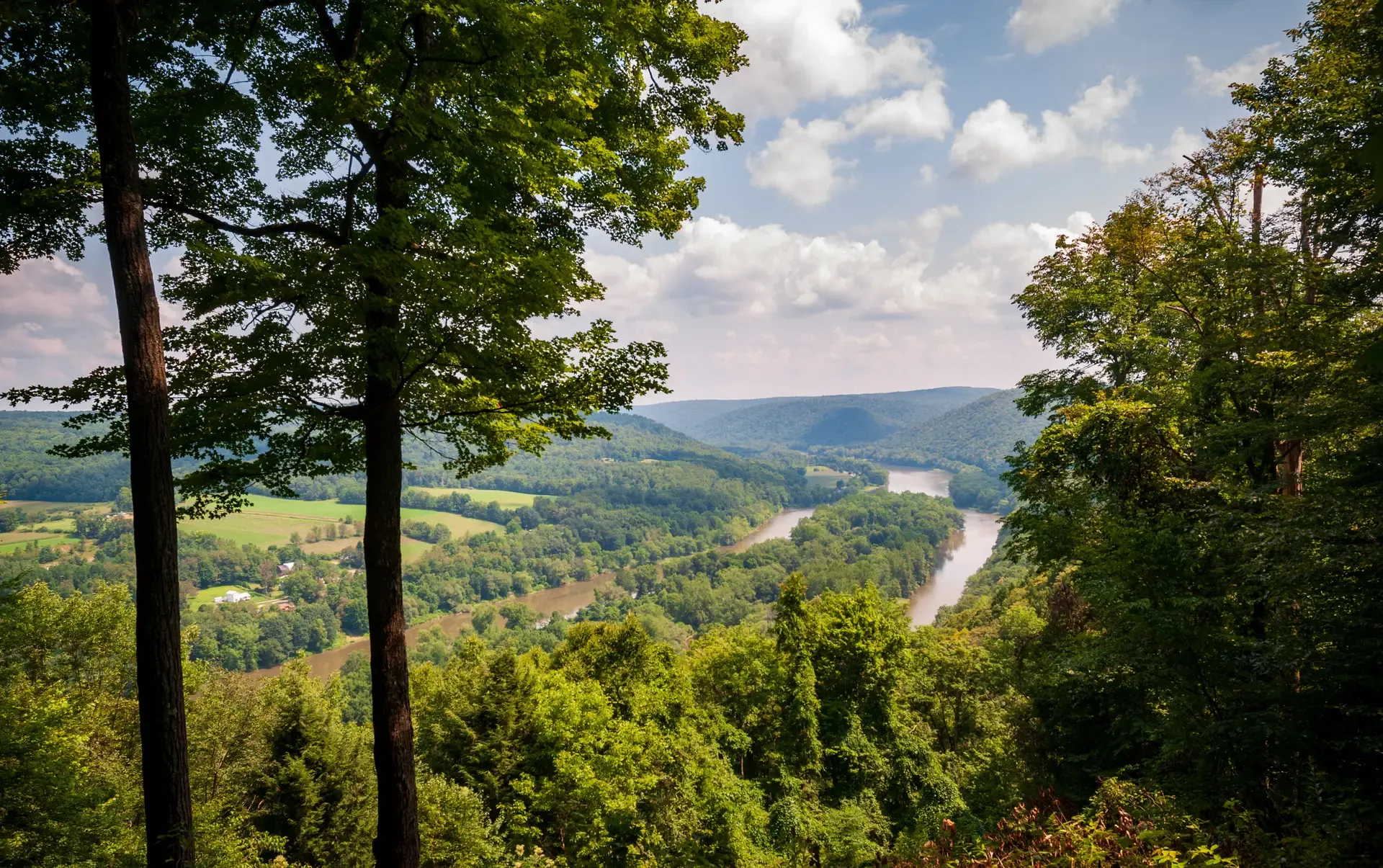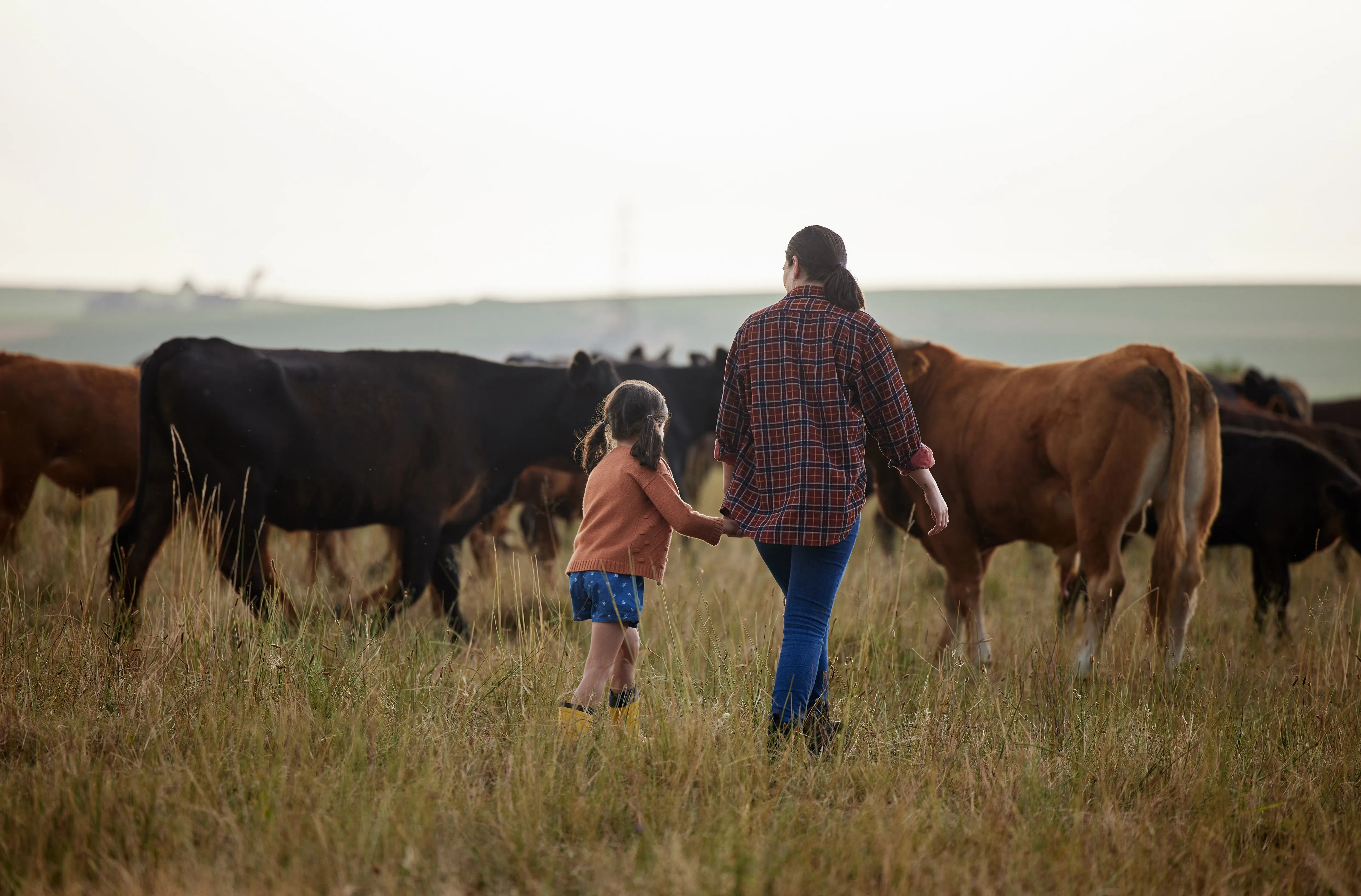Branching Out to Fight Climate Change

If you launch a new initiative during the biggest public-health crisis in a century and it nevertheless gains traction, you might really be onto something. That was the takeaway for the American Forest Foundation (AFF) and The Nature Conservancy (TNC) after their joint venture, the Family Forest Carbon Program (FFCP), met with initial success, inspiring the partners to think bigger.
The FFCP is an effort to combat climate change by paying private landowners to manage their forests to optimize carbon storage. Working with scientists, foresters, landowners and businesses the FFCP identified sustainable forest-management practices to enhance carbon storage in the Central Appalachian region and launched a pilot program in Pennsylvania in March 2020.
Private landowners responded in a big way, leading to plans to expand the FFCP this fall to two additional regions. The first covers four counties in eastern New York, five counties in western Massachusetts, and the six counties in the southern half of Vermont. The second region is comprised of nine separate parts of northern Minnesota, Wisconsin, and Michigan representing more than 10.1 million forested acres.
"After we launched the program, we were seeing enough momentum in the Pennsylvania pilot that we felt comfortable beginning to look at new regions," said Jonathan Shears, the AFF Regional Manager in charge of scaling up the FFCP.
"We’re still in the early stages of this program, and we want to go where we think we can make a real, meaningful impact on climate change mitigation and in the lives of family forest owners. Eventually, we want to have this program go nationwide, but first we must determine which forest-management practices are best for each region. This expansion is a major step toward our goal."
When implemented nationwide, the FFCP will have a major impact, offsetting about two gigatons of carbon emissions through the end of the century. That’s roughly twice the annual greenhouse-gas emissions from all the passenger vehicles in the United States.
There are about 760 million acres of forestland in the U.S. representing approximately one-third of the country. Forests and forest products currently offset about 15% of annual U.S. carbon emissions, and studies suggest that amount could be doubled given the widespread implementation of sound forest-management practices, according to the FFCP.
Since private landowners account for about 36% of U.S. forestland, it’s essential that carbon markets be available to them as part of a comprehensive climate plan. The FFCP opens up carbon storage programs to family forest owners for the first time. Most such programs are accessible only to landowners with about 3,000 acres or more, but the FFCP is open to landowners with anywhere from 30 to 2,400 acres.
"Forest landowners grapple with the same issues across the country, and that’s a lack of technical or financial assistance, or both, and a lack of incentives to harvest sustainably, so the FFCP helps to fill those gaps," Shears said. "That will be true anywhere we go with this program."
Success in the Keystone State
Pennsylvania was chosen for the FFCP pilot because family forest owners account for about 51% of the state’s forestland, and because better management practices could result in a meaningful impact on both carbon sequestration and overall woodland health.
Many years of high-grading, or harvesting mainly the largest, highest-quality trees, have left parts of the region with degraded forests. In addition, some invasive species are preventing the regeneration of oak and other long-lived species that store vast amounts of carbon, making woodlands less efficient at storing carbon over time. Unsustainable management also means the forested landscape is left with a less diverse structure, depriving many wildlife species of the habitat they need to thrive.

Under the FFCP, the carbon removed from the atmosphere by participating landowners becomes part of a carbon market in the form of verified carbon credits. Companies committed to sustainability can purchase these credits.
Last year, the FFCP was launched with targeted ads on social media sites such as Facebook and Instagram directing landowners to AFF’s WoodsCamp tool. The free, online resource links family forest owners with programs, services and professionals to help them manage their land. WoodsCamp connects landowners with consulting foresters who can help them determine if they’re eligible for the FFCP based on property size and land-management goals.
Eligible landowners receive installment payments if they sign a contract pledging to implement sustainable forest management practices.
Launching during the pandemic hindered the program’s outreach, but private landowners still proved responsive. In the program’s first year, 51 landowners signed contracts to participate, and they represent nearly 8,000 acres of forestland. In total, 688 eligible landowners with total holdings of more than 88,000 acres expressed interest in the FFCP by submitting information through WoodsCamp, and 140 of them completed site visits with local forest professionals.
Along with social media ads, the FFCP conducted a few small direct-mail campaigns to landowners, and a number of conservation groups featured the program in their newsletters, helping to spread the word. AFF also leveraged its relationships with consulting foresters to reach private landowners.
"The pandemic certainly presented some challenges and pushed us back a little bit," said Elizabeth Vranas, AFF’s director of National Implementation for the FFCP. "But we were really pleased with how much interest there was in the program, and that so many people followed through and actually signed up. The participants seem to be happy with the program so far, so we’re really excited to expand it."
For Pennsylvania participants, the FFCP identified two forest-management strategies that qualify for payments: growing mature forests and enhancing future forests. The first practice promotes the growth of larger, high-quality trees by limiting harvests over a 20-year contract period while still allowing for some sustainable harvesting. Enhancing future forests promotes regeneration by removing competing vegetation following or preceding a regeneration harvest. This practice allows quality trees to have the space, sunlight and water they need.
To determine how much carbon is being stored on each property, the FFCP is working with Verra, the nonprofit organization that oversees the Verified Carbon Standard. Together, they have created a new methodology to streamline the measurement process and improve accuracy. Measurements, verified by a third party, are based on changes to forest stock as a result of implementing the two approved management practices.
In addition to storing more carbon, landowners who implement these practices are improving the overall health of their forests, including wildlife habitat and water quality.
Looking Beyond Pennsylvania
Encouraged by the response from landowners last fall, the FFCP put out a request for proposals to The Nature Conservancy’s state chapters, asking them why their regions would be the best choices for expansion. The chapters in the chosen areas were enthusiastic about getting started, Shears said, and their local knowledge is an important tool for implementation.
"They have a lot of the technical expertise that we need to build a practice-based program," Shears said. "We need The Nature Conservancy’s scientific minds to do a lot of this work as we expand because we need to determine the carbon benefit of specific forest-management practices, which ones we can afford to pay for and how much we can pay for them.
"We have to be really confident that the practices we select are going to result in more carbon being stored than the baseline, common practices for that region and forest type."

Jim Shallow, Director of Strategic Conservation Initiatives for The Nature Conservancy’s Vermont chapter, said the group has contracted with academic researchers and other forestry experts to determine the most effective forest-management practices to include in the FFCP. An initial list of about 20 practices was whittled down to six with the help of stakeholders, and scientific modeling will help determine which ones make the cut.
In addition to enhancing carbon storage, Shallow said the initiative is important to The Nature Conservancy because so much of the forestland in New England is considered critical wildlife habitat.
"We see this as a great opportunity to work with the private landowners who own the vast majority of land here in New England and help them improve the conditions of their forests, which will allow them to store more carbon," Shallow said.
"We see this as a great opportunity to work with the private landowners who own the vast majority of land here in New England and help them improve the conditions of their forests, which will allow them to store more carbon," Shallow said.
"Many landowners in New England, and other places as well, have a high sense of stewardship and really want to do the right thing for the climate as well as for their woods, and this will give them the opportunity and means to do that. They’ve been locked out of these markets because of the way they’ve been structured, and this innovative way forward will allow them to participate in these markets and get the income needed to improve their forest conditions."
Pushing for Forest Policy
Another important aspect of FFCP’s work involves lobbying for public policies that address climate change through forest management, including the Rural Forests Markets Act. The bill, reintroduced in the U.S. Senate in April by Sens. Debbie Stabenow (D-Mich.) and Mike Braun (R-Ind.), includes several key provisions:
Establishes the Rural Forest Market Investment Program, which offers guaranteed loans of up to $150 million for nonprofits and companies to help small and family forest owners generate credits for carbon and other ecosystem services.
Encourages landowners to adopt voluntary land-management practices that store carbon in forests.
Creates new revenue streams for small-scale family forest owners by making it possible to generate innovative credits that they can sell in established markets.
Brings investment to rural communities by reducing the financial risk to private investors who can contribute the upfront financing that makes these projects possible.
Shallow said the expansion of the FFCP and the push for public-policy solutions are necessary as part of an all-hands-on-deck approach to fighting climate change. He said if the FFCP’s expansion into New England proves successful, it likely won’t be long until family forest owners in New Hampshire and Maine get their chance to participate as well.
"The climate emergency is going to take all of us working together to address this crisis, and this partnership demonstrates that," Shallow said. "Hopefully, we can get federal legislation passed that will help provide funding for this effort as well. We need to tackle this crisis that’s facing the globe by doing this kind of work all around the country."
Modeling Forest Management Practices
AFF and TNC have worked with a variety of stakeholders to come up with forest-management practices for each of the FFCP expansion regions that landowners can implement to store additional carbon in their woods.
The practices have been identified through workshops as sound forest-management strategies that enhance overall forest health in addition to carbon storage. However, only some provide enough of a carbon benefit to produce marketable credits.
With the help of partners, AFF and TNC are working to scientifically model forest-management practices and determine which are most effective at storing carbon, relative to the cost of implementation. Those practices that provide the best bang for the buck likely will be approved for the FFCP in the targeted regions of expansion, meaning that private landowners who enroll in the program and implement these practices would receive monetary support.
AFF and TNC are working together to further refine the practices and will be piloting their implementation in the coming months.
This piece was originally published as part of AFF's quarterly magazine, Woodland Magazine. You can read the full piece in the digital edition of the publication.
Related Articles

October 23, 2025
Forestry Organizations Urge Trump Administration to Support Private Landowners in Trade Practices
The American Forest Foundation (AFF), Forest Landowners Association (FLA), and National Alliance of Forest Owners (NAFO) sent a joint letter today to Secretary of Agriculture Brooke Rollins and Secretary of the Treasury Scott Bessent urging the Trump administration to include private forest landowners, family forestry businesses, and timber product manufacturers in efforts to address unfair trade practices.

October 21, 2025
Statement: Critical Wildfire Legislation Moves to Senate Floor
“AFF applauds the U.S. Senate Committee on Agriculture, Nutrition, and Forestry for advancing the Fix our Forests Act.

October 21, 2025
The Value of Your Fields & Forests Project
Curious what the Fields & Forests program really offers? Beyond the $30 per acre payment, there are added cost savings and income opportunities that make enrollment even more valuable. See how it all adds up!